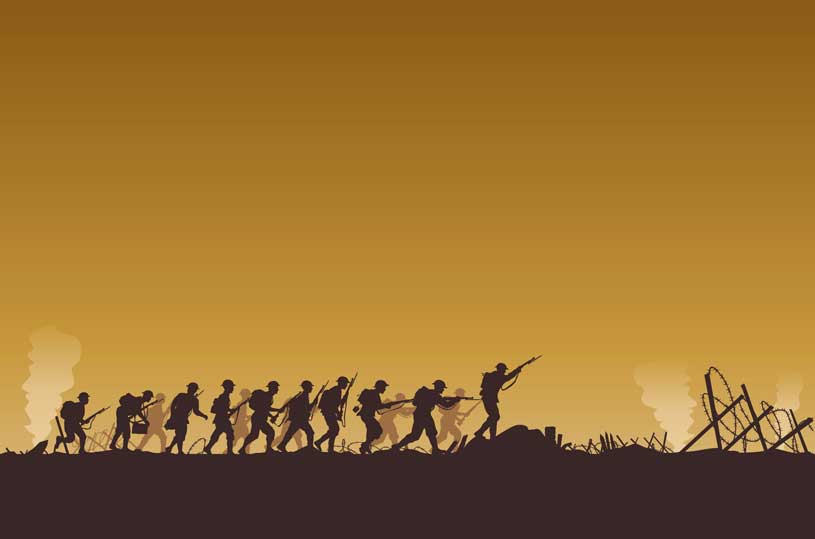Many aspects of Avraham Avinu’s greatness are discussed a great deal, in particular his perfection of the trait of kindness. However, on deeper examination we see more subtle facets of his greatness. Throughout his life, Avraham underwent numerous difficult challenges and setbacks. Some of these tests ended with great success, but others did not culminate as Avraham had hoped. His reaction to these events teaches us tremendous lessons about how to respond to both success and adversity.
Surely the most difficult challenge Avraham ever faced in his eventful life was that of the Akeidah, whereby he was commanded to slaughter his only son without any explanation. In the end, he was told by the malach that he had passed this arduous test, thereby meriting the blessing that his descendants would be like the stars of the heavens.
Avraham’s measure of success is further elucidated by Yalkut Shimoni, quoted by Rav Yissocher Frand, shlita. When Avraham was about to slaughter his son at the Akeidah, the malach called to him, “Avraham! Avraham!” Why did the malach repeat his name? The Yalkut explains that there are two images of each person: his worldly image and his heavenly image; his worldly image is what he makes of himself in this world, and his heavenly image represents what he could become if he fulfills his potential. Avraham, after he passed the last of his ten tests, finally reached his complete potential, and consequently his two images became identical. The malach mentioned the two “Avrahams” together, the Avraham of olam hazeh and the ideal Avraham of olam haba, indicating that the two of them were now the same. Thus at this point in time Avraham had reached the pinnacle of greatness. Indeed he had attained spiritual perfection.
How would a person react after such a momentous event? A little pride in his achievements would be understandable, or at least a feeling of elation and celebration. Yet Avraham’s reaction was very different. The verse immediately after the Akeidah tells us: “Avraham returned to his young men, and they stood up and went together to Beersheva, and Avraham dwelled in Beersheva.” Avraham considered himself “together” with the young men: Just as they had undergone no great experience at the Akeidah, Avraham traveled as if he had not just faced and passed the most difficult test that any man ever had. He felt no sense of pride or even celebration; rather, he returned to Beersheva to continue his holy work of teaching the world about the Divine Presence.
Avraham’s greatness with regard to the aftermath of the Akeidah is further demonstrated by his conduct in the subsequent incident discussed by the Torah, that of his dealings with the wily Efron in his efforts to acquire the Cave of Machpelah as a burial place for his wife, Sarah Imeinu. Rabbeinu Yonah makes a seemingly baffling point: The Mishnah in Avos tells us that Avraham faced ten extremely difficult tests, and most commentators explain that the Akeidah was the final one. However, Rabbeinu Yonah writes that Avraham’s difficulties in finding a burial plot for Sarah constituted his final test. Rav Frand asks how it is fathomable that after the ultimate challenge, that of the Akeidah, there could be yet another challenge that Avraham needed face – surely the Akeidah represented the pinnacle of human achievement, and no further tests were necessary!
He answers that of course the Akeidah was the most difficult test that Avraham faced, but the final test offered a different challenge. It is human nature that after a person succeeds in a difficult endeavor he may have a tendency to want to rest on his laurels, and to feel that he has a right to relax a little. After enduring the incredible challenges involved in the Akeidah, it would have been understandable for Avraham Avinu to hope for a little respite. Accordingly, when he was immediately faced with the tragic death of his wife and the subsequent difficulties in acquiring a burial plot for her, he could have easily become frustrated with the course of events and harbored feelings of complaints toward HaKadosh Baruch Hu.
However, Rabbeinu Yonah teaches us, he succeeded in this very different kind of test, by accepting that even after he’d reached his full potential, he was still liable to face new challenges. This teaches us a further dimension of Avraham’s greatness in his response to success. Not only did he remain humble, but he also remained prepared to face whatever new challenges could arise.
We have thus far seen how Avraham reacted to success without letting it affect his humility or hinder his avodas HaShem. Yet how did Avraham react on the rare occasions where he did not succeed in his endeavors? One such instance occurred when HaShem informed Avraham of His plans to destroy the city of Sodom because of its evil behavior. Avraham launched into a lengthy attempt to rescue the people of Sedom. He argued that if there were fifty righteous people, then HaShem should save the whole city, and so on, until it became clear that there weren’t even ten. Once this had been determined and the decree had been issued, the Torah makes a seemingly superfluous comment: “HaShem departed when He had finished speaking to Avraham, and Avraham returned to his place.” What is the significance of the fact that Avraham returned to his place? What lesson is it teaching us?
The Steipler Gaon, ztz”l, addressed this question in making a vital point to Rav Elazar Shach, ztz”l. On one occasion the Moetzes Gedolei HaTorah made a certain decision in opposition to the views of Rav Shach and the Steipler. The matter was of such importance to Rav Shach that he felt a great sense of despair, and his spirit was broken.
Rav Shlomo Lorincz, ztz”l, writes that soon after this incident he visited the Steipler, who asked him how Rav Shach was faring. He answered that Rav Shach was thoroughly dejected and did not know which way to turn. So great was his disappointment that he said he had no more strength to continue. The Steipler listened to this sadly and said, “I would like you to go to Rav Shach for me and tell him the following.” The Steipler proceeded to ask the aforementioned question as to the significance of the fact that “Avraham returned to his place.” He answered with the following words:
What this means is that the Torah wants to teach us – tell Rav Shach this – that when one has done everything in order to save a situation, and the goal has not been achieved, one must implement, “and Avraham returned to his place.” One has to go back and resume the activity that one is obligated to engage in, continuing as though nothing untoward has happened. Under no circumstances whatsoever does lack of success justify a person’s giving way and being unable to carry on his holy work. Repeat this, word for word, on my behalf. He has done everything without missing a single detail; therefore he must also fulfill “and Avraham returned to his place,” and continue leading Klal Yisrael as before.
Rav Lorincz reports that when he conveyed this message to Rav Shach, Rav Shach replied that he accepted this lesson and would return to his work on behalf of Klal Yisrael.
The Steipler’s astute observation demonstrates Avraham’s attitude to failure – he recognized that he had done his utmost to achieve his goal, and when he failed, he did not let that failure prevent his holy work. By the fact that a man as great as Rav Shach faced great difficulty in overcoming this challenge, it is clear that this is a test that can affect everyone. Avraham’s reaction to his setback teaches us the proper way to react to failure.
We have seen yet another facet of the greatness of Avraham Avinu – he excelled in his reaction to both success and failure. Perhaps the underlying trait that enabled him to succeed in all the tests that we have mentioned was his great humility. That taught him not to become haughty or complacent in the face of success, and not to despair when, through events beyond his power, he could not fulfill his goal.
From the book “Beacons of Light”





